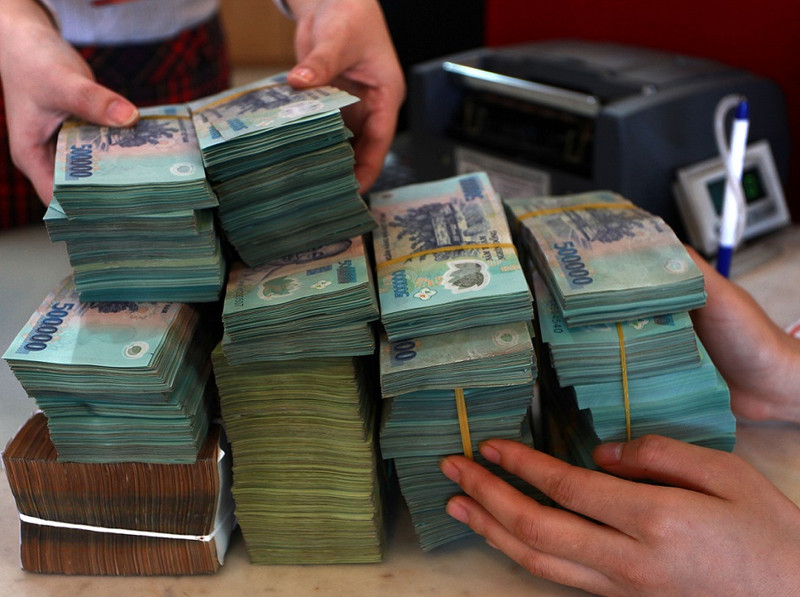The government has set the target that GDP will grow by 5.6% in Q1 of this year, 6.7% in Q2, 6.5% for Q3, and 7.1% in Q4. The rate for the whole year will be 6.5%.
Tim Leelahaphan, an economist for Thailand and Vietnam at Standard Chartered Bank, said he believed the Vietnamese economic situation is gradually getting better in Q1 of 2023. He also cited Standard Chartered’s forecast that the nation’s GDP growth could reach 7.2% this year and 6.7% next year.
“Although the economy still faces some macro risks such as inflation, public debt, and confidence regarding economic recovery, the recovery outlook is positive for the second half of 2023,” Leelahaphan said. “Vietnam continues to be an important link in the global supply chain and an attractive destination for many businesses.”
To monitor the economy and spur its growth, the government has and will have to use various resources including loans, with sturdy solutions employed to ensure national financial health.
According to the Ministry of Finance (MoF), from now until the year’s end, it will “continue to strictly control the state budget deficit, public debt, the provisional debt obligations of the state budget, and localities’ debts in order to ensure national financial safety and improve the effective use of loans.”
Specifically, the government will continue to control the state budget deficit within the permissible limits as set out by the National Assembly and strive to gradually reduce public debt. New loans with official development assistance (ODA) and concessional loans from foreign donors are only to be used for development investment expenditure, not for recurrent expenditure. In addition, the government will arrange all payments of principal and interest in full and on time.
In addition, the government will also ensure all expenditure is within the debt safety limit, while closely abiding by the resolutions and guidelines of the Party, the National Assembly, and the government on the national financial plan and borrowing and repaying public debt every five years.
The MoF will have to coordinate with ministries, sectors, and localities to strengthen the inspection and close supervision of borrowing and use of loan capital and debt repayment, especially for new loan agreements, foreign loans, and loans guaranteed by the government. In addition, the MoF will also have to continue to implement solutions to restructure the public debt portfolio towards safety and sustainability.
Staying safe
The MoF reported that in February 2023, the government’s total debt repayment was about 431.82 million USD, of which direct debt repayment was about 397 million USD, and on-lending debt was around 32.1 million USD.
Cumulatively in the first two months of this year, the government’s total debt repayment was as much as 2.16 billion USD, of which direct debt repayment was over 2 billion USD, and on-lending debt was 153.9 million USD.
When it comes to the mobilisation of domestic loans by the government, the total volume of government bonds issued in February 2023 was 1.59 billion USD. Cumulatively in the first two months of this year, the figure sat at 3.01 billion USD, equivalent to 64.28% of the plan for Q1 of 2023 (4.69 billion USD) and 17.36% of the plan in 2023 (17.39 billion USD).
In February 2023, the government signed two foreign loan agreements with the International Fund for Agricultural Development with a total value of about 43 million USD.
Total domestic and foreign government loans in the January-February 20 period reached 1.53 billion USD. Cumulatively in the first two months, total domestic and foreign loans hit 3.17 billion USD (tantamount to 11.3% of the approved plan), of which loans for the central budget stood at 3.06 billion USD (equivalent to 11.3% of the plan), and on-lending loans sat at 116.7 million USD (11.4% of the plan).
It is estimated that last year, the government had loans worth a total of 29.3 billion USD. This includes loans for central budget balancing of up to 28.1 billion USD, of which borrowing to offset the central budget deficit is estimated to have been 19.6 billion USD, borrowing to repay the principal was estimated to have been about 8.52 billion USD, and on-lending was as much as 1.16 billion USD.
Such loans will come from government bond issuance instruments, with an average issuance term of less than nine years; from official development assistance loans and foreign preferential loans; and from other lawful financial sources or from the issuance of government bonds directly to the State Bank of Vietnam.
Also, according to the MoF, the government’s debt repayment was about 14.6 billion USD, of which the government’s direct debt payment was a maximum of 13 billion USD and the repayment of on-lending projects is 1.56 billion USD.
When it comes to the loan and repayment plan of localities, borrowing from the government’s foreign loans and other domestic loans last year was as much as 1.24 billion USD. Localities’ debt repayment was 265.7 billion USD, including principal payments of 158.1 million USD and interest payments of 107.56 million USD.
As for foreign commercial loans of businesses not guaranteed by the government, the limit of medium and long-term foreign commercial loans of enterprises and credit institutions by self-borrowing and self-payment method was up to 7.3 billion USD; and the growth rate of short-term foreign debt balance was about 25% as compared to the outstanding balance as of December 31, 2021.
The government has reported to the National Assembly (NA) that based on the country’s borrowing scheme, Vietnam’s public debt at the end of this year was about 44% of GDP; the government’s debt was 41% of GDP; while the nation’s foreign debt was 40% of GDP, and the government’s direct debt repayment obligation sat at 19% of total state budget revenue.
All these rates were still lower than the limits set by the NA.
According to The Economist’s Global Debt Clock, on March 15, Vietnam’s public debt to GDP sat at 45.6%, and per capita public debt was 1,039 USD, while total public debt was almost 94.85 billion USD.
Last year, the MoF reported, the total state budget recorded a surplus of 9.67 billion USD. The total budget spending is estimated to have been over 67.93 billion USD, up 8.1% year-on-year.
Meanwhile, the state budget revenue is estimated to touch 77.6 billion USD, up 13.8% year-on-year. All kinds of revenues have registered a year-on-year increase, reflecting a recovery in almost all sectors in the economy.
Fresh expectations
The MoF also expects that the total central budget revenues in 2023 will be about 37.52 billion USD and total local budget revenues will stand at 32.92 billion USD.
Meanwhile, it is estimated that Vietnam’s total state budget spending this year will be around 90.26 billion USD. Of which, spending for development investment will be 31.6 billion USD, and recurrent expenditure will be 50.96 billion USD. Other expenditure will also cover debt service of 4.47 billion USD; expenditure for salary reforms, retired salaries, and adjustments of some schemes of subsidies, allowances, and social security pertaining to basic salaries (543.47 million USD); and other sums of expenditures (2.68 billion USD).
It is expected that by late 2023, the economy’s public debt will be as much as 44-45% of GDP, the government’s debt around 41-42% of GDP, foreign debt 41-42% of GDP – these levels are also lower than the NA’s permissible limits.
However, according to German provider of market and consumer data Statista, the national debt of Vietnam is projected to continuously increase between 2022 and 2027 by about 115.9 billion USD (+77.28%). After consecutive increasing years, the national debt is estimated to reach 265.83 billion USD and therefore a new peak in 2027.
According to Trading Economics global macro models and analyst expectations, the government debt to GDP in Vietnam is estimated to hit 40% of GDP by late last year. In the long-term, the ratio is projected to trend around 41% of GDP in 2023.
Vietnam’s national debt from 2017 to 2027 (unit: USD) - (*) Forecast
2017: 116.61
2018: 122
2019: 125.78
2020: 132.77
2021: 133.41
2022: 149.97 (*)
2023: 171 (*)
2024: 192.98 (*)
2025: 216.52 (*)
2026: 241.18 (*)
2027: 265.83 (*)
Source: Statista
















